Sneha Shrestha, known by her artistic alias IMAGINE, is a Nepali artist who gracefully incorporates her native language and meshes the aesthetics of Nepali manuscripts with graffiti influences. We are also lucky enough to call her one of our own, as she is the Mittal Institute’s Arts Program Manager. In this role, Sneha not only elevates the prominence of art within our endeavors but also adeptly oversees the Visiting Artist Fellowship and Distinguished Artist Fellowship programs. With a global footprint, Sneha has captivated audiences from the ancient streets of Kathmandu to the bustling cultural hub of Boston.
We had the privilege of discussing her recent milestone as the first Contemporary Nepali artist to have her work permanently acquired by the Museum of Fine Arts, Boston. We also eagerly anticipate insights into her latest exhibit in New York and the opening of her solo show, Ritual and Devotion.
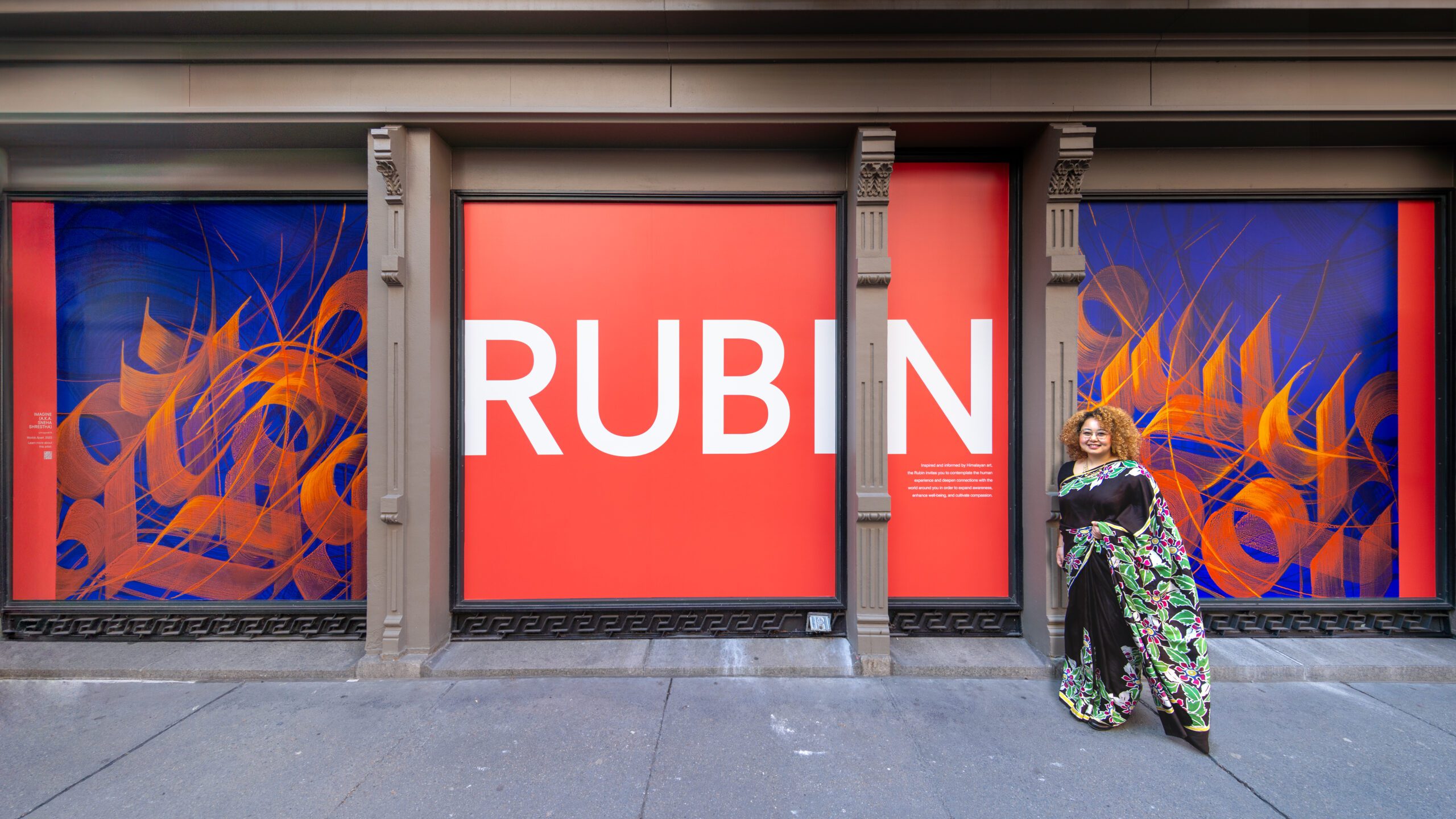
Mittal Institute: Congratulations on your latest exhibition, Reimagine: Himalayan Art Now at the Rubin Museum in New York. Can you share more about your artwork on display in the museum? What does it mean to you to be one of the Nepali artists chosen to exhibit their work?
Sneha Shrestha: Thank you! The work I created at the Rubin Museum is a little different than my usual work. The exhibit unfolds across two immersive rooms, each comprising three distinct parts. The work as a whole is documentation of my personal journey, as I delved into the significance of Nepali ritual objects housed within the museum’s collection.
As I explored these sacred artifacts, I found myself pondering the shift in how the objects continue their lives when removed from their original context and placed within sterile environments. Do they retain their spiritual nature when divorced from their intended purpose?
The culmination of the exhibit leads visitors into a luminous, vibrant space awash in bright pink hues, inspired by my Devi paintings. Here, I envision a world where cultural authenticity thrives, where communities have the opportunity to share and celebrate their heritage on global platforms in the most genuine manner.
The exhibit united artists from the Himalayan region to showcase their rich cultural tapestry. It is my fervent hope that more museums will embrace this approach, ensuring that objects from diverse cultures are presented with reverence and authenticity.

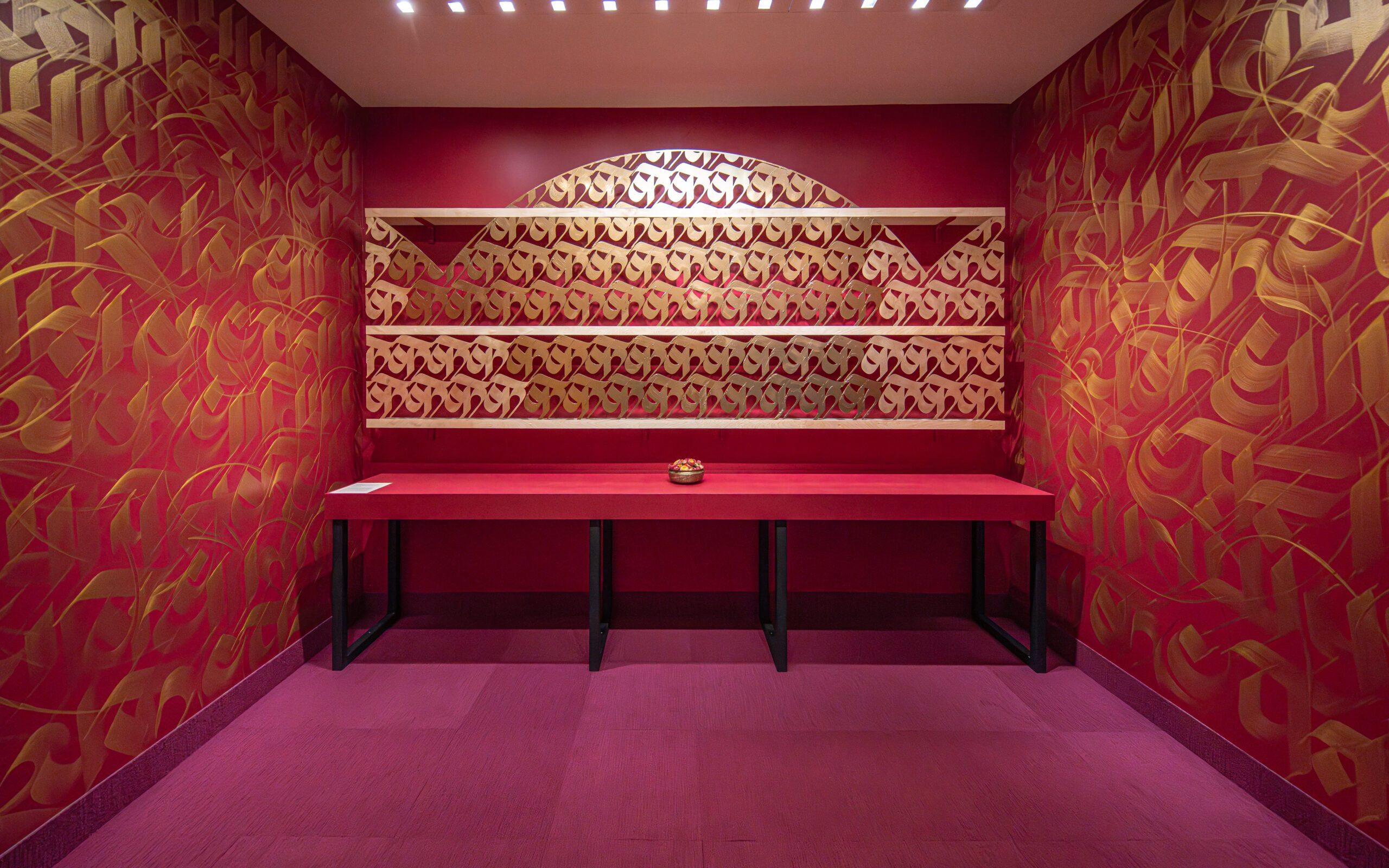
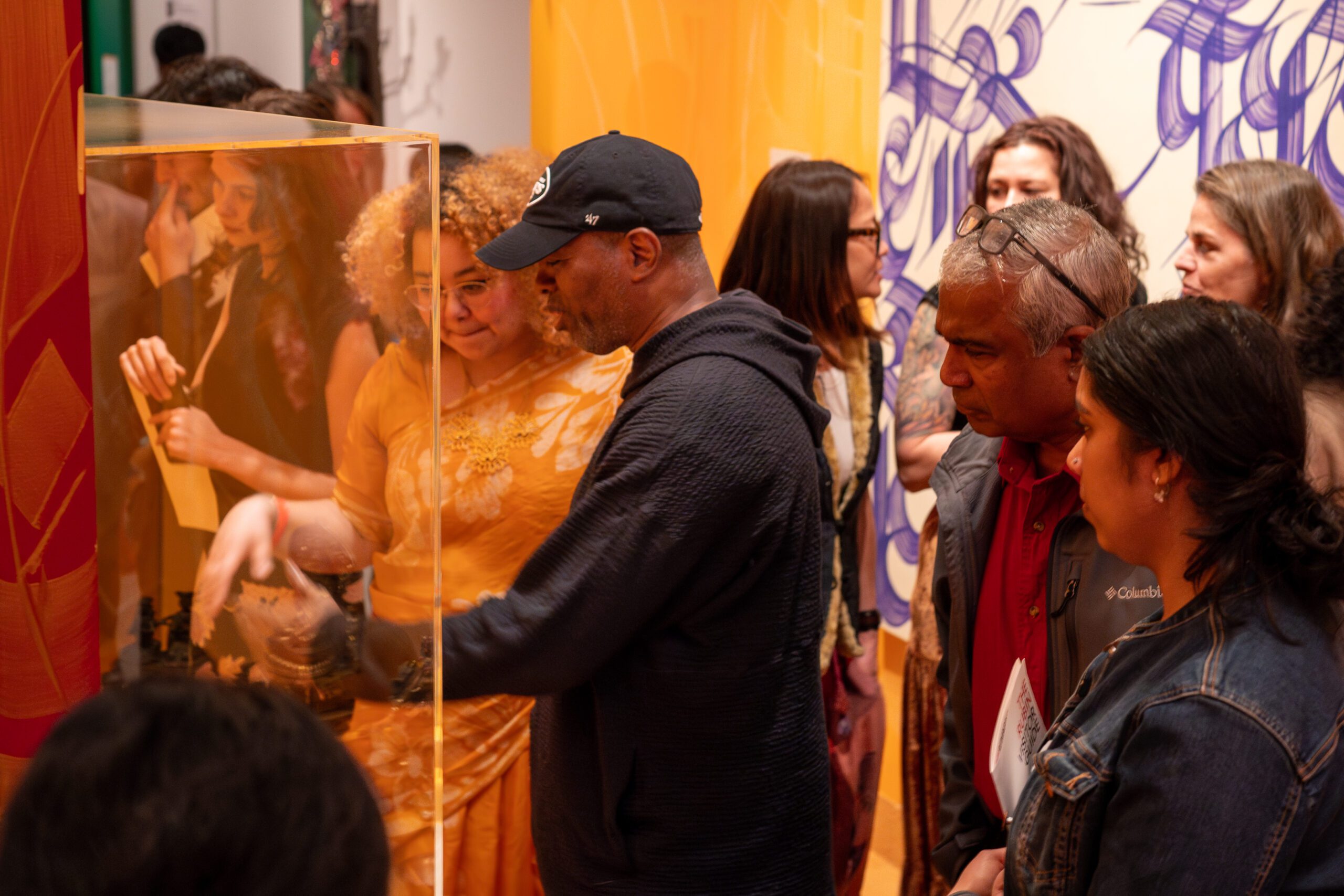
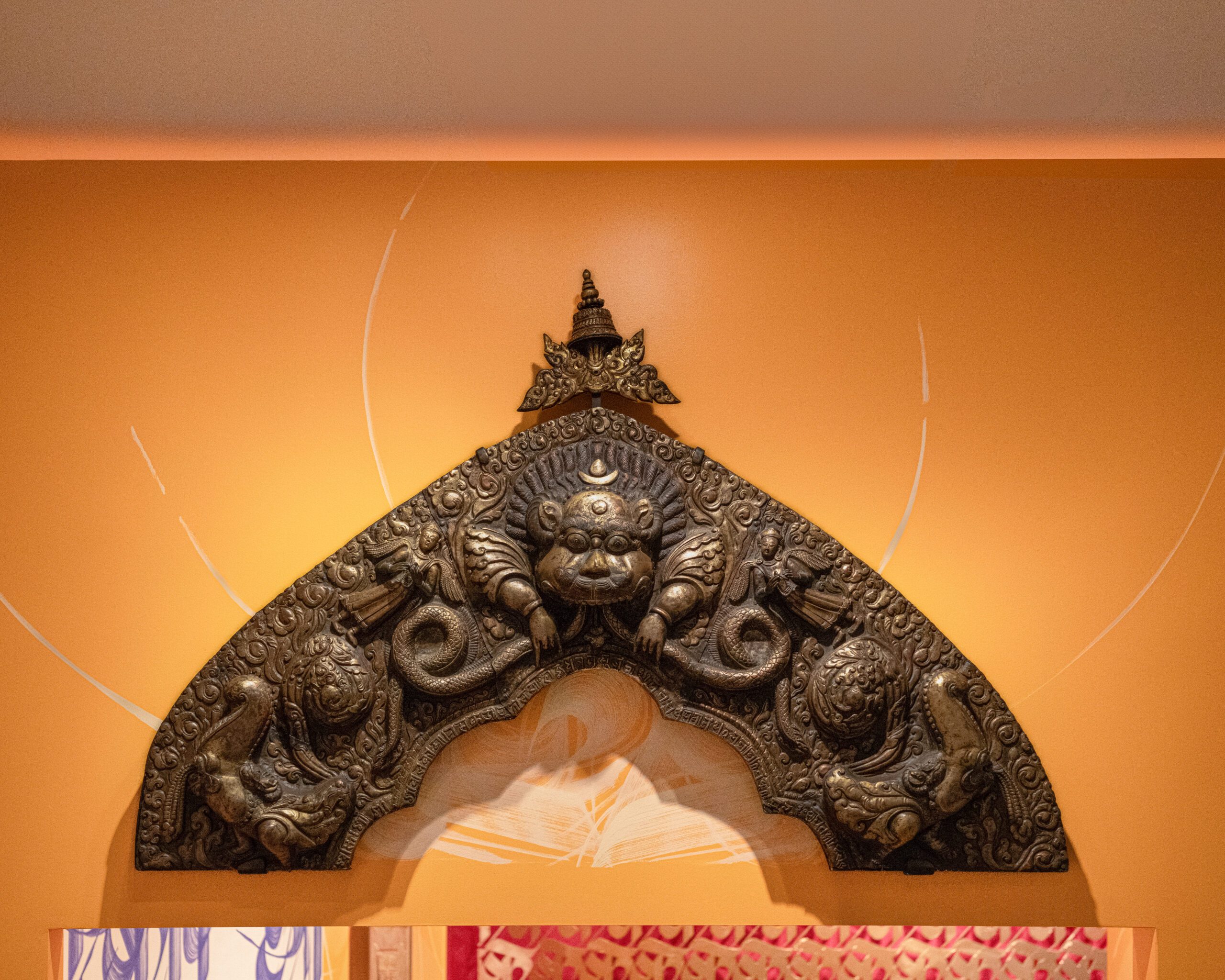
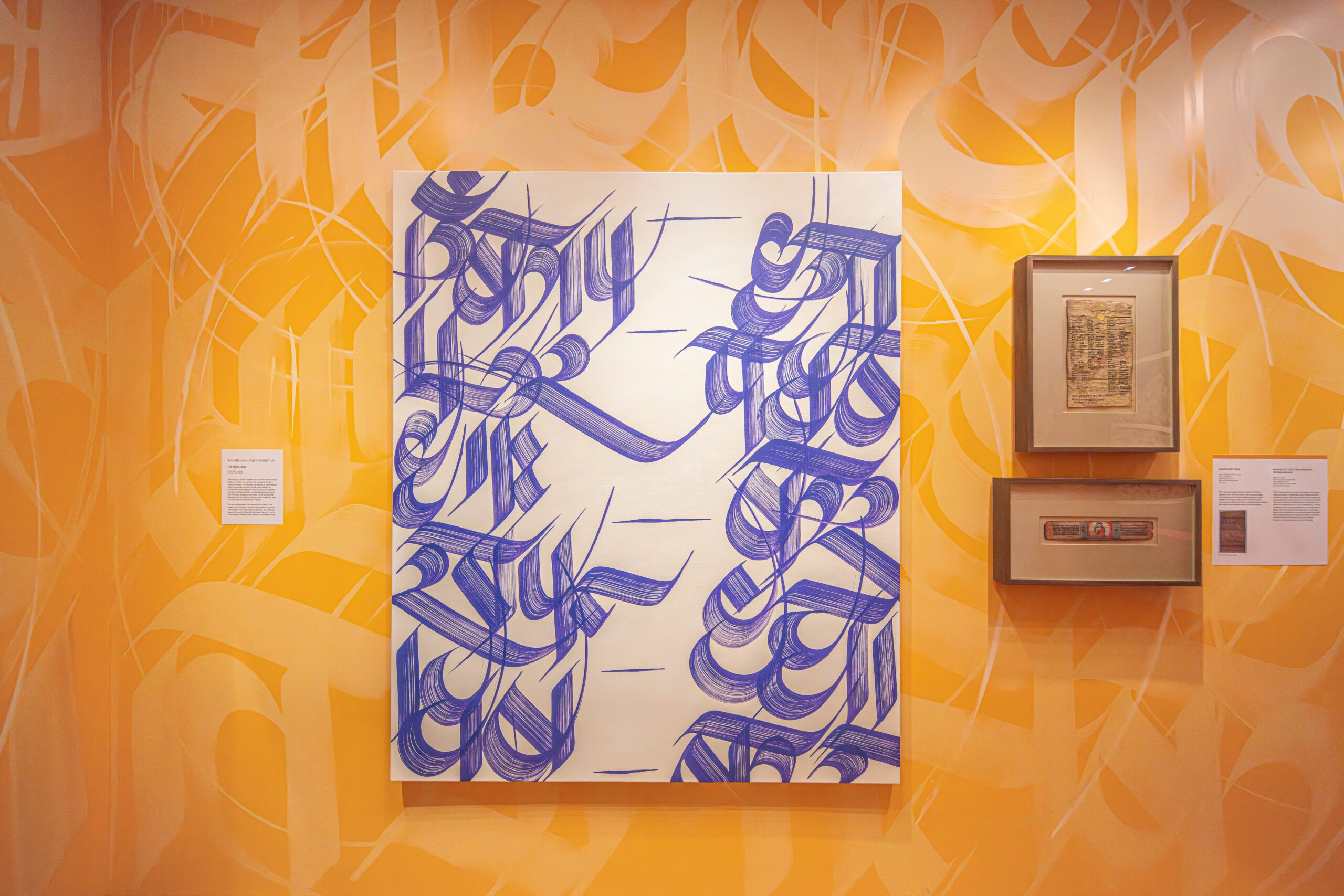
Artist wearing traditional Nepali saree in front of print of WORLDS APART at The Rubin Museum Of Art, New York City | (second) Installation view MENDING AND MOVING featuring THE MENU, CALLING THE EARTH TO WITNESS | (third) CALLING THE EARTH TO WITNESS sculpture | (fourth) Artist providing tour of Rubin Museum installation | (fifth) Upper section of a Torana dated 1810 with artist’s mending additions | (sixth) THE MENU | Images courtesy of Jane Louie Photography
Mittal Institute: You also opened your biggest solo Ritual and Devotion at the Cantor Art Gallery at the Prior Arts Center. Could you tell us about the show?
Sneha Shrestha: Absolutely, this show has been an incredible journey, evolving over the past five years. Within this body of work, I delve into the concept of devotion, examining its significance within the realms of family, culture, heritage, ancestry, and self.
Through site-specific installations infused with meditative elements, I seek to encapsulate the delicate balance between the sacred and the secular, while also exploring the construction of environments that foster reverence and contemplation.
Moreover, I illuminate the intricacies of the immigration experience, delving into its inherent sacrifices, nostalgic echoes, and the ongoing evolution of personal identity.
I hope the show encourages viewers to reflect on their own journeys and consider the significance of ritual and devotion in their lives.
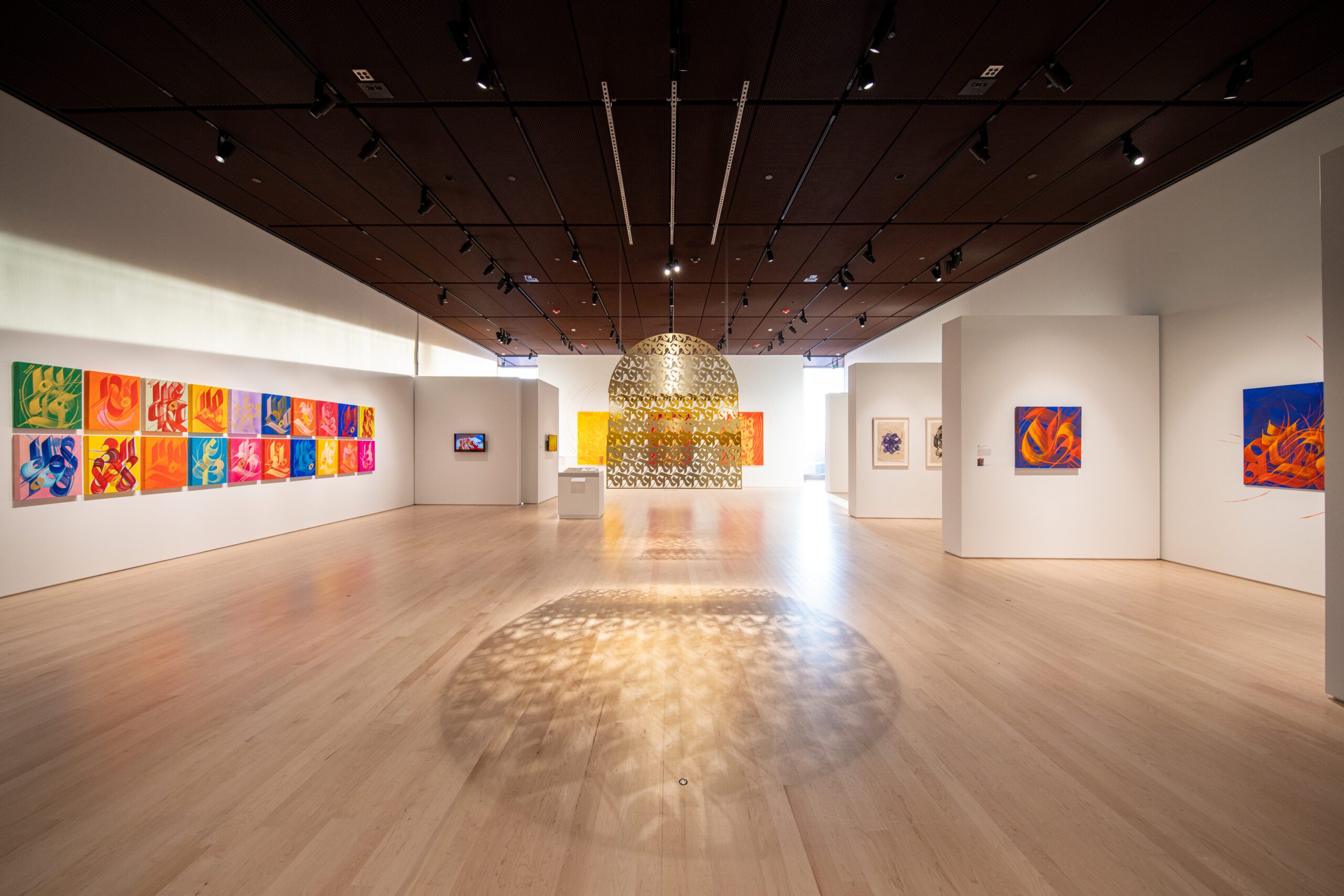

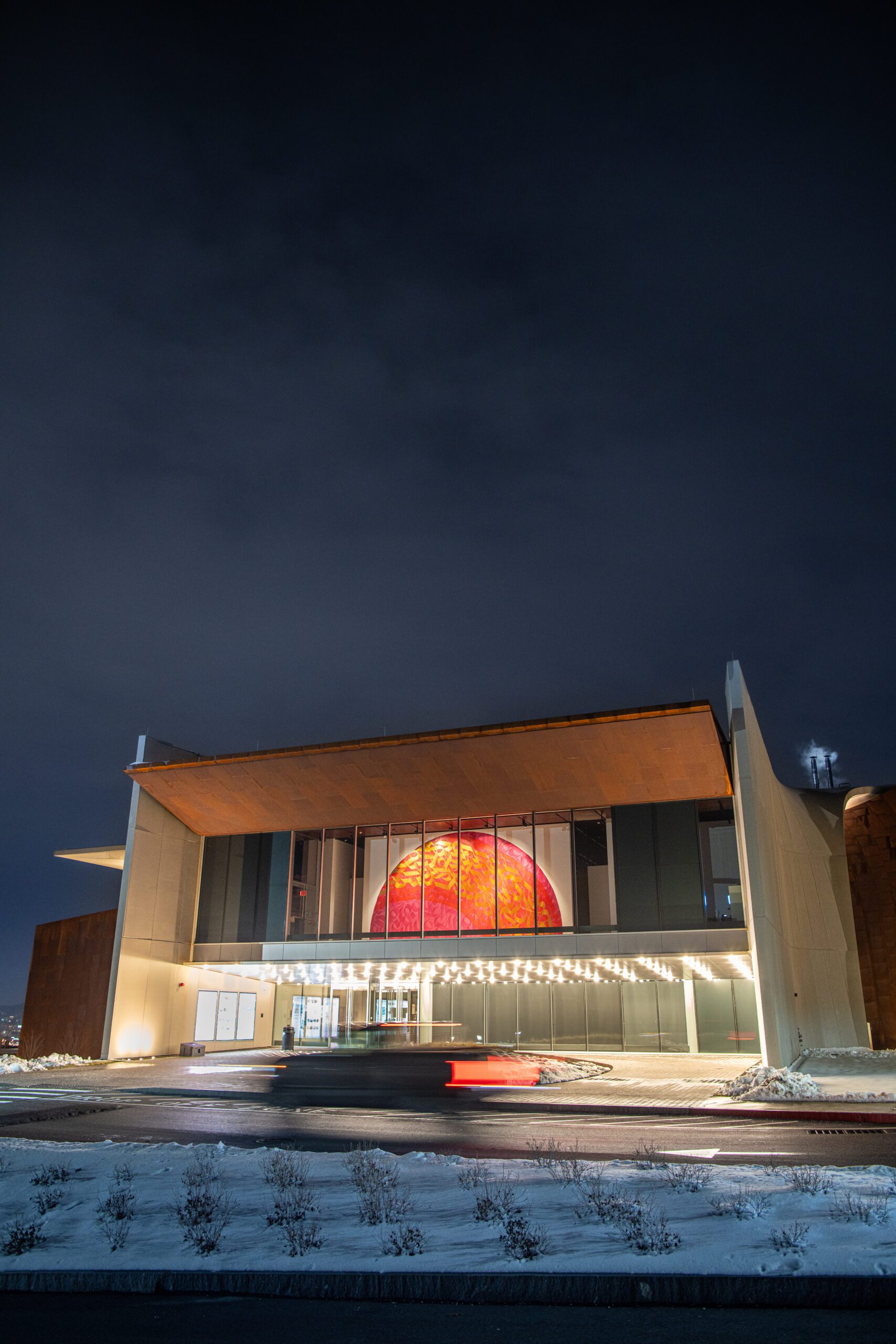

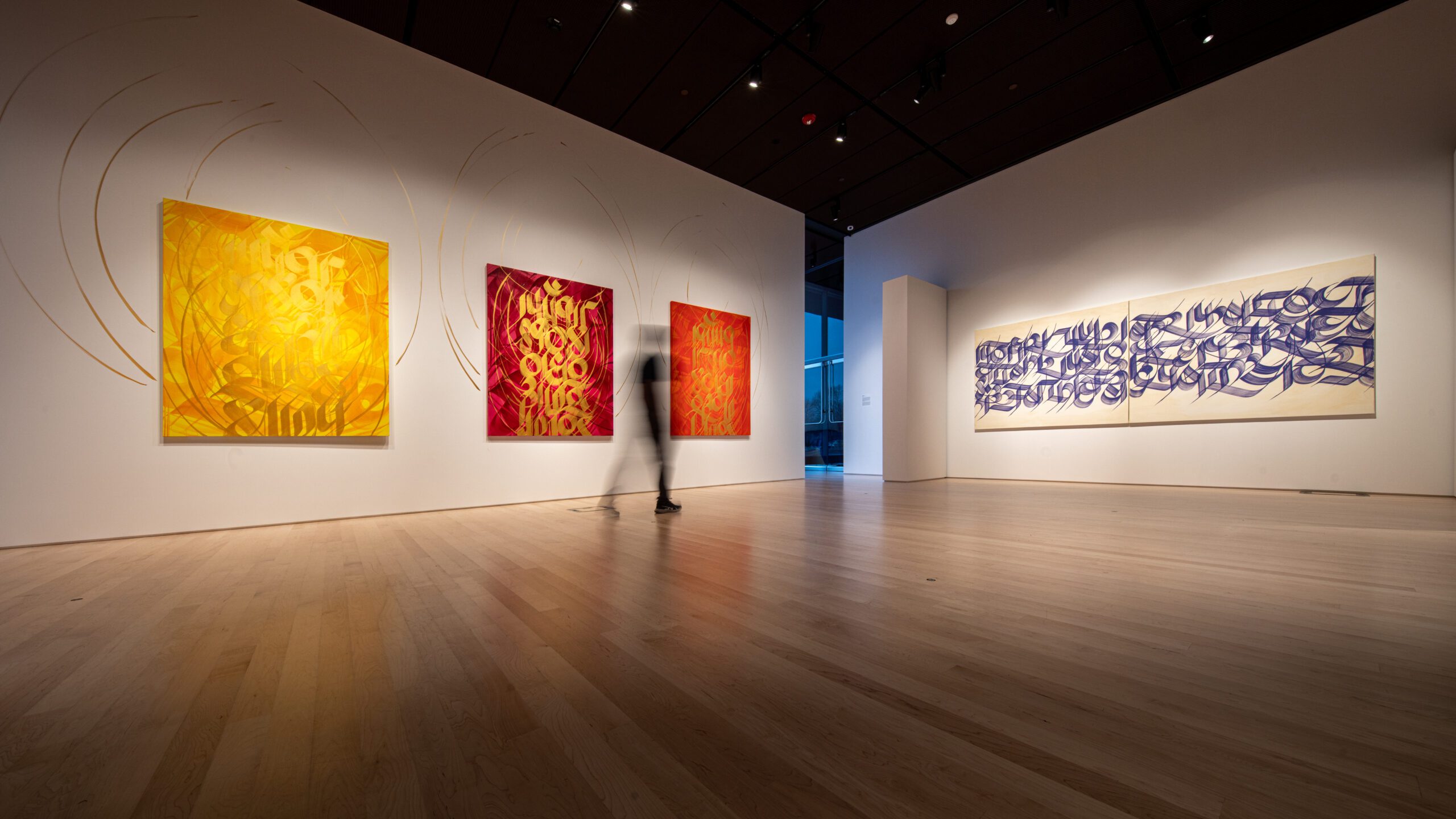
Installation view of Ritual and Devotion at Iris and B. Gerald Cantor Art Gallery I (second) Artist with DWARPALIKA sculpture | (third) Exterior view of Cantor Gallery at night | (fourth) CELEBRATION series installation I (fifth) Installation view of DEVI and MY ANCESTORS’ VOICE | Images courtesy of Jane Louie Photography
Mittal Institute: You are the first Nepali contemporary artist in the history of the Museum of Fine Arts to ever have their work acquired into the institution’s Permanent Collection! Can you share more about the creation of this piece and where we can see it?
Sneha Shrestha: Thank you! The painting is currently on view at the MFA’s Tender, Loving Care exhibit till July 2025!
During the height of the COVID pandemic, I found solace in painting, using it as a form of meditation to calm my mind. This particular piece, “Home416,” holds special significance for me as it symbolizes my resilience and serves as a visual representation of my meditation practice. It reflects my attempt to reconnect with my roots, drawing upon the native letters I learned as a child in an effort to grasp the concept of home during such uncertain times.
The choice of a blue background in the painting was deliberate, symbolizing the universal color of the sky—a reminder that regardless of our differences, we are all under the same vast expanse. This notion of unity was particularly comforting when feelings of isolation crept in. The repetition of white letters, representing the first letter of the Nepali alphabet, further reinforces this connection to my heritage.
Being the first contemporary Nepali artwork acquired by the MFA, “Home416” holds immense significance for me. It serves as an authentic introduction to Nepal and my culture, free from romanticized notions of the past. I take pride in representing my country in this way, and I believe that this painting encapsulates my true essence as both an individual and a Nepali artist. It marks a meaningful beginning, one that I cherish deeply.
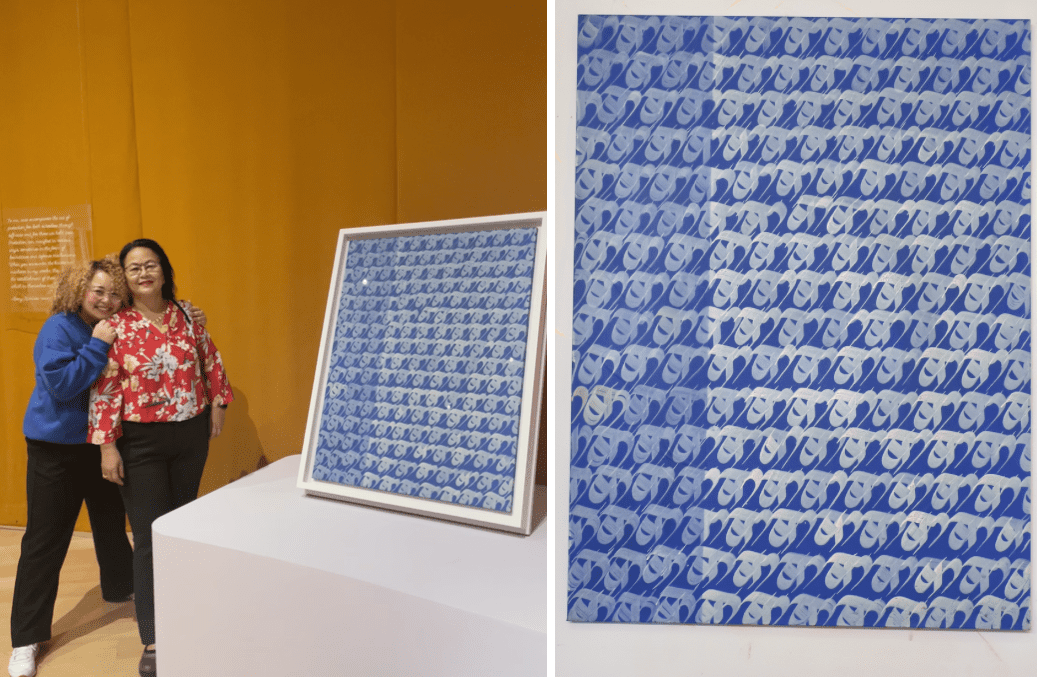
Artist with her mother beside HOME416 at MFA, Museum of Fine Arts, Boston | HOME416 | Images courtesy of Sneha Shrestha
Images courtesy of Jane Louie Photography
☆ The views represented herein are those of the interview subjects and do not necessarily reflect the views of LMSAI, its staff, or its steering committee.
